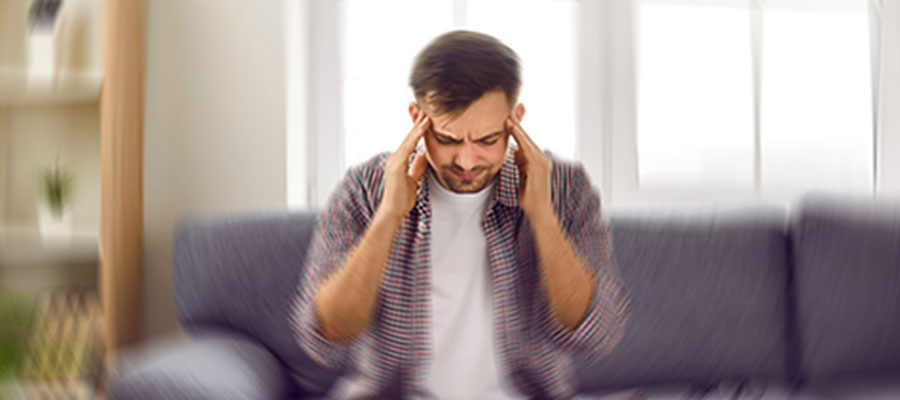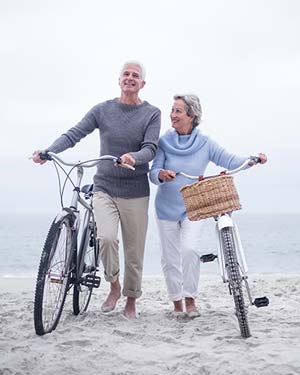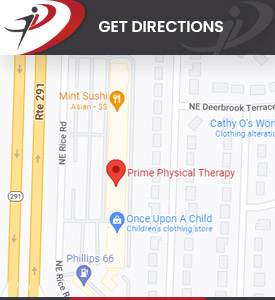Vestibular Rehabilitation Specialist in Lee’s Summit, MO
Vestibular Rehabilitation is a physical therapy used to treat the vestibular disorder. Some symptoms of vestibular disorder are vertigo, nausea, vomiting, and postural instability. Vestibular rehabilitation therapy focuses on exercises that help in the management of dizziness and balance disorders. Consult Dr. Kyo Hwang at Prime Physical Therapy if you are experiencing dizzy spells or problems with your balance. For further guidance contact us or book an appointment online. You can also visit our clinic at 1161 NE Rice Rd Lee’s Summit, MO 64086.


Table of Contents:
What is vestibular rehabilitation?
Who needs vestibular rehabilitation?
How does vestibular rehabilitation therapy work?
When should I see my healthcare provider?
We often take our ability to maintain balance and spatial orientation for granted until something causes us to lose that ability. If you’re finding that you are having trouble with your balance or are feeling dizzy often due to a condition or for an unknown reason, you may benefit from vestibular rehabilitation. Learn more about vestibular rehabilitation below!
Vestibular rehabilitation is a therapy that focuses on helping individuals with vestibular conditions that cause dizziness or balance issues. Vestibular conditions are those that affect the vestibular system, which connects your inner ear to your brain and helps you keep your balance when walking over rough ground or getting out of bed.
Some common therapies included in vestibular rehabilitation include:
• Balance retraining exercises: Balance retraining exercises can take several weeks before they start to recalibrate balance for patients. These exercises include manual head maneuvers like shaking and nodding exercises, as well as staring activities, also known as gaze stabilization.
• Eye movement control: Eye movement exercises can alleviate conditions like vertigo by helping you adjust and maintain your balance. These exercises involve moving your eyes up and down and to the left and right while keeping your head straight.
• Habituation exercises: After a therapist identifies the movements or environments that trigger your dizziness or imbalance, they can progressively expose you to those movements or environments in a way that helps the patient habituate themselves to the sensation and experience reduced symptoms.
• Strengthening and stretching exercises: Vestibular rehabilitation also involves various other strengthening and stretching exercises designed to reduce dizziness, imbalance, vertigo, or visual issues.
Anyone who deals with dizziness or balance issues may benefit greatly from vestibular rehabilitation. In some cases, balance and dizziness may occur without any known condition causing them or as a result of aging. In other cases, they are a direct symptom of a vestibular condition. With that in mind, some different conditions that indicate you can benefit from vestibular rehabilitation include:
• Benign paroxysmal positional vertigo (BPPV)
• Labyrinthitis
• Ménière disease
• Migraine headaches
• Stroke, or cerebrovascular accident (CVA)
• Traumatic brain injury (TBI)
• Vertigo
• Vestibular neuritis
To understand how vestibular rehabilitation therapy works, it may prove helpful to first explain how the vestibular system works with regard to symptoms like dizziness and imbalance. Dizziness occurs when your sense of spatial orientation becomes confused. Your sense of spatial orientation arises from your brain’s calculations of your body’s position in relation to its surroundings. When this spatial awareness is disrupted, dizziness and loss of balance commonly result.
The portion of your brain responsible for this activity is the cerebellum, intimately interrelated with your vestibular system. Signals within the vestibular system detect head movement and send signals through the cerebellum to eye muscles that counter the head rotation with precision to provide a stable gaze. When there are issues within the vestibular system, these signals can become disrupted, causing you to feel dizzy and off-balance. Disrupted signals within the brain hamper your central nervous system’s ability to tell your body what to do to maintain balance.
Vestibular rehabilitation therapy works to correct these sensations and restore the connection between your central nervous system and the rest of your body through exercises and techniques that trigger a process of adaptation, habituation, and substitution.
With adaptation, signals in the brain adapt to the incorrect signals that the damaged vestibular system is sending, helping your brain recalibrate itself. Habituation involves progressive, repeated exposure to vestibular movement and stimuli to help you become desensitized to it. Finally, substitution involves exercises and strategies that help your body function in lieu of the missing or impaired vestibular function.
Vestibular rehabilitation will rarely cause any issues, especially when they are guided by a qualified physical therapist. However, some patients may experience issues when doing exercises on their own. While such issues are rare, you should see your healthcare provider if you notice any of the following symptoms after performing vestibular rehabilitation exercises:
• Sudden fluctuations or changes in hearing
• Painful or uncomfortable pressure or sensations of fullness in your ear
• Increased or new ringing in your ear, also known as tinnitus
• Discharge from your ears
• Unexplained pain or discomfort in your neck and back while performing exercises
Dizziness and loss of balance can interrupt your day and ability to perform tasks at home, work, or in the community. Whether you are experiencing unexplained dizziness or loss of balance or those symptoms arise from a general condition, we can help at Prime Physical Therapy with vestibular rehabilitation care. Learn more or book an appointment through our website or by calling us today. We serve patients from Lee’s Summit MO, Greenwood MO, Blue spring MO, Lake Lotawana MO, Raytown MO, and surrounding areas!
Check Out Our 5 Star Reviews



Additional Services You May Need
▸ Physical Therapy
▸ Manual Therapy
▸ Neurological Disorders
▸ Concussion Therapy
▸ Vestibular Rehabilitation
▸ Sports Medicine
▸ Kinesiotaping
▸ Dry Needling
▸ Graston Technique
▸ Trigger Point Release
▸ Neural Mobilization
▸ Muscle Energy Technique
▸ Joint Mobilization
▸ Knee Pain
▸ Soft Tissue Mobilization
▸ Electrical Stimulation
▸ Headache/Head pain
▸ Shoulder Pain
▸ Low Back Pain
▸ Ankle/Foot Pain
▸ Dizziness
▸ Arthritis Rehabilitation
▸ Multiple Sclerosis
▸ Parkinson’s Disease



